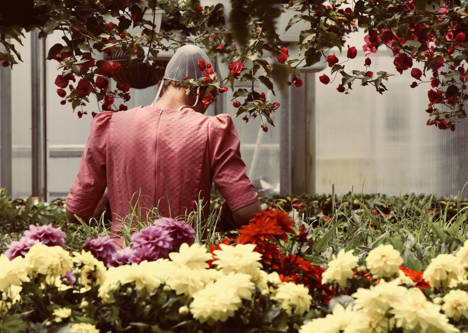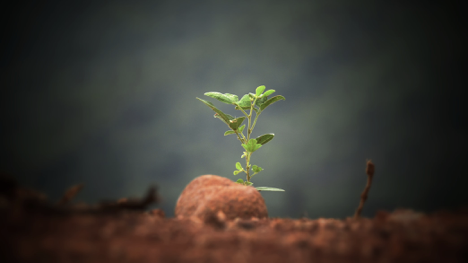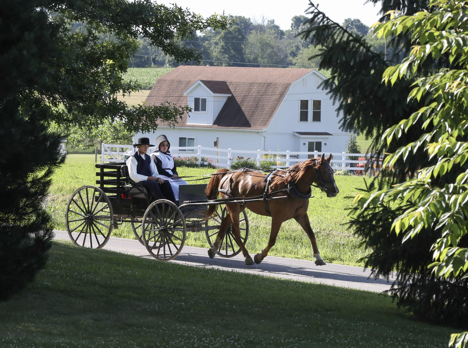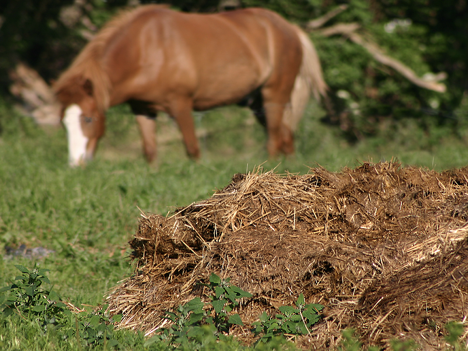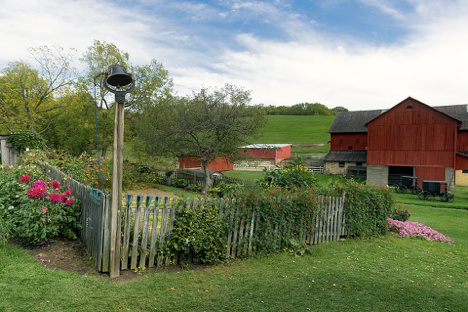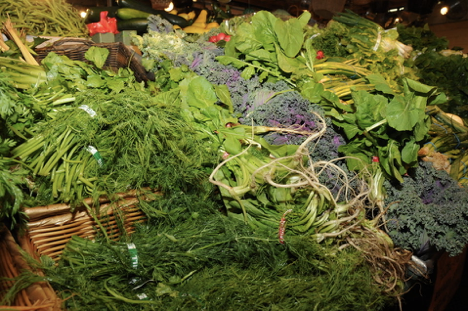The Amish is famous for being a religious minority group composed of fascinating people with great culture and traditional lifestyle. Each one can even be seen living more simply than a lot of people. The main focus of the Amish community is farming. They also focus on crafts and worship on God depending on the tradition that was split off several centuries ago from the Mennonites.
Still, one thing that this minority religious group is known for is their garden. In fact, taking a leisurely walk through the country back-roads of the Amish country will surely let you be greeted by the profound practicality and fascinating beauty of Amish gardens. One thing that sets Amish gardens apart is that these serve as the reflection of the unwavering faith and culture of the family who cultivates them.
It is because the Amish can’t seem to separate their gardening practices and spirituality. Their gardens are also cultivated in a way that they reflect more than three centuries of Amish gardening wisdom. If you intend to learn about Amish gardening, then here are some facts relevant to it that some people still don’t know:
1. Amish gardens are built with a strong connection to the Earth.
One amazing fact about Amish gardens is that they are built for over three hundred years based on the instructions imparted by God in terms of tending the Earth gardens as well as everything that is within it. This means that building Amish gardens requires a strong sense of Earth connectedness. Cultivating it is also centered on God and how He wants us to take care of everything within the earth, including the soil and earth themselves, insects, butterflies, birds, and bees.
The community cultivates their gardens under the spiritual teachings that they should act as the stewards and protectors of the Earth. With this, it is no longer surprising to see the members of the Amish community using only natural disease and pest control solutions.
Fortunately, the way the Amish constructs or designs their gardens allows them to attract butterflies, insect eaters, pollinators, and butterflies naturally. Such bio-diverse farms and gardens also work efficiently in terms of using soil nutrients. Add to that their use of the most appropriate Amish wooden planters and plant stands and you will surely be amazed at how beautiful their gardens are.
2. The Amish practices bio-diverse heirloom planting.
The Amish community has a goal of preserving their gardens’ genetic diversity so the next generations can take advantage of them. Among the bio-diverse heirloom planting practices implemented by the Amish, especially the women in the community, are seed saving and exchanging as well as heirloom fruit tree grafting.
There were also reports proving that the gardeners in the Amish community exchange garden plants, herbs, and seedlings cultivated from heirloom seeds. They also exchange cuttings with family members and friends as a means of preserving bio-diverse gardens. They strongly believe that these practices can contribute to a more sustainable community for them.
3. The Amish grow vegetables for canning.
The Amish community is also famous for canning. They can almost everything, including those that most people do not consider as traditional canned goods, like various kinds of meat. One thing about this fact that is relevant to Amish gardens is that the group tends to grow the vegetables they decide to can in their own gardens. They cultivate them until they are ready for canning. As for the fruits, the Amish tend to buy the ones they intend to preserve through canning.
4. The Amish use diversified farming systems.
Another important fact about Amish gardening that you have to be aware of is that they use farming systems that are more diversified than what non-Amish gardens and farms use. You can also see them being powered by solar energy through draft horses, instead of being powered by fossil fuel. However, there are still instances when their gardens make use of small quantities of fossil fuel. Despite that, their focus is on more natural and sustainable systems, so they limit such use as much as possible.
5. The Amish primarily uses animal manure for fertilization.
One thing that the Amish community highly values is animal manure as they view it as a natural and safe solution for retaining and cultivating the soil and making it as fertile as possible. In fact, animal manure is considered by the Amish community as the major source of fertility for their farms but besides animal manure, organic fertilizer used as well. They rarely use chemical fertilizers and focus on preserving their gardens through natural means.
6. Amish gardens are well-planned.
The Amish community tends to plan their gardens really well. It is probably because their gardens serve as a vital source of food for them. They do not just consider their gardens as recreational but also as a part of their basic needs, so they make sure to create them in a well-planned manner. With that, expect to see nice rows of plants with beautiful blooms in the garden.
You may also notice that some Amish gardens have flowers that were planted alongside vegetables. They do so because they believe that there are certain kinds of flower, like marigold, that can help prevent pests from pestering and damaging vegetables.
7. Amish gardens are devoid of toxic and harsh chemicals.
In case they need to use chemicals, the Amish gardeners make it a point to do so in the most minimal way possible. In most cases, the gardeners in the Amish communities use compost, animal manure, and organic matter to enrich the soil. They also make it a point to cultivate their garden in a way that it actively attracts beneficial bugs and birds as they contribute to removing chemicals, pesticides, and insecticides that might just deplete the nutrients in the soil.
Conclusion
The Amish communities really take a lot of pride in the gardens they cultivate. In fact, they exert more work than the others since their gardens are also among the major sources of food for the entire family. With all the practices implemented by the Amish community in terms of caring for their garden, including shunning motorized tools, monoculture, and toxic chemicals, it is no longer surprising to see their gardens blooming beautifully using natural materials and signs.


